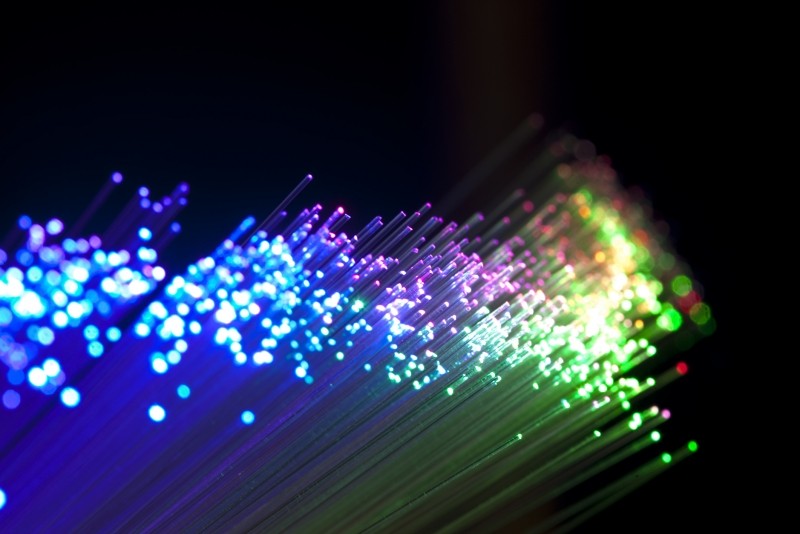
Electrical engineers at the UC San Diego's Qualcomm Institute have managed to break the "capacity limit" for fiber optic transmission, paving the way for faster, longer and potentially cheaper fiber networks.
Currently, there is a limit on the intensity of light you can send through a fiber optic link, which arises from the fact that when you increase the intensity of light through a fiber cable, noise, distortion and signal attenuation increases. This is called the optical Kerr effect, and it causes problems for fiber network designers.
Eventually the Kerr effect becomes so great that, at high intensity levels, distortion entirely prevents an outbound signal from being correctly interpreted by a receiver. The issue gets worse the longer a cable is, so to increase the transmission rate through a fiber optic link by increasing the intensity level while keeping noise at bay, you have to include signal repeaters along the way.
This new breakthrough helps increase the capacity limit of high-bandwidth fiber optic cables by conditioning signals with "frequency combs", allowing the receiver to predict any noise that is introduced during the transmission. The ability to predict noise patterns means the receiver can reconstruct the intended data from the noisy signal.
The breakthrough has two implications. Firstly, the amount of power that can be sent through a fiber optic cable can be increased significantly without worrying about the effects of noise. Researchers from the Qualcomm Institute were able to increase the signal power in a fiber cable by 20 fold and still get data at the end.
The use of frequency combs also means data can be sent along longer cables without the need for repeaters, which has the potential to reduce the cost of fiber networks (so long as ultra-fast speeds aren't a priority). For example, engineers were able to send data a record-breaking 12,000 kilometers through a fiber cable with standard amplifiers and no repeaters.
With this breakthrough, hopefully we can see the capacity of fiber cables increased beyond what is currently possible in real-world applications.